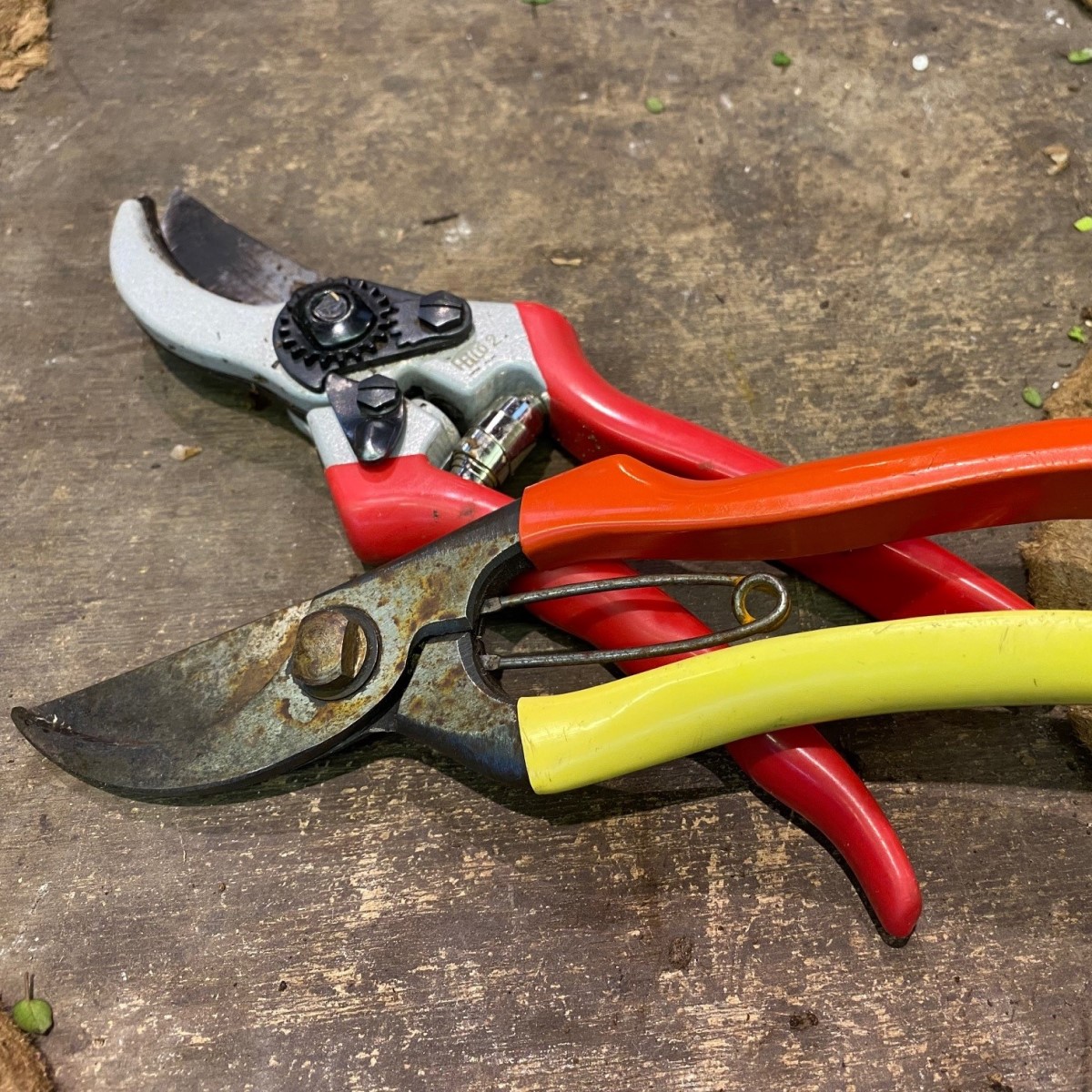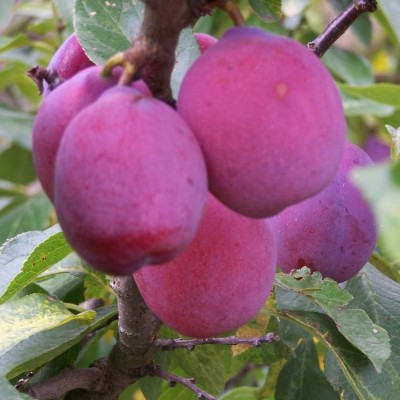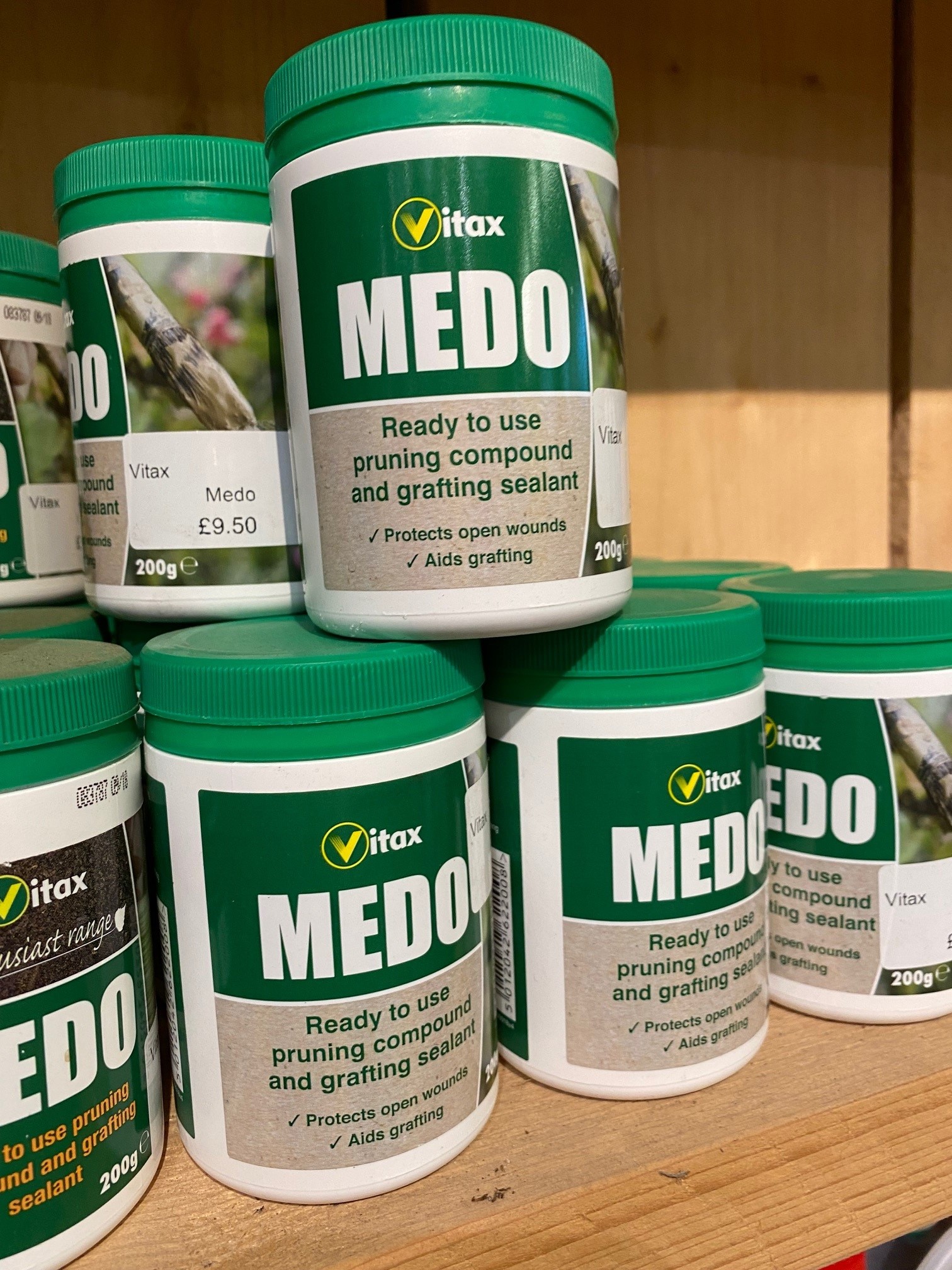
The first key point to remember – all stone fruit should be pruned during the summer. This is done to avoid serious diseases such as silver leaf and bacterial canker, which can prove fatal. Silver leaf (Chondrostereum purpureum) is a fungal disease which attacks stone fruit trees, especially Victoria plums, causing the leaves to develop a silvery sheen and affected branches to die back. When these branches are cut, there will be dark staining through the centre of the wood. Silver leaf spores are released between September and May, particularly during periods of wet weather, and carried by the wind. In some cases the foliage doesn’t actually turn colour, the first sign of the problem will be branches starting to die-back. It is probably the most common cause of death for stone fruit trees, and the reason why pruning should always be carried out during the growing season when there are fewer spores around.
For young trees, where the aim is to develop a branch framework, the end of April is ideal. It is early enough in the growing season for the tree to respond well to pruning, and put on good growth. For all established trees, pruning should be done in July or August.
The next question that always follows when customers are told to prune in summer is “doesn't that mean I will be cutting off all the fruit?” Well, yes and no. Yes, there may well be a few fruit that will be pruned off, but that is not a bad thing. Most plum trees in particular have a tendency to overcrop. This can lead to under-sized fruit, and a biennial habit – a bumper crop may exhaust the tree and lead to little or no fruit the following year. It's a good rule to thin all orchard fruit by about 25% in June or July, and if this is done through summer pruning, the fruit that are left will develop and ripen better.
But you will not actually be pruning off all the fruit, because you will not be giving the tree an all-over ‘haircut’. Stone fruit trees produce the majority of their flowers and fruit on one-and two-year old wood. As the branches get older, they become much less productive (this is the main reason you cannot grow stone fruit trees as espaliers). Successful pruning is a balancing act between encouraging this continual production of new growth, and leaving enough new wood on the plant to fruit next year. The aim is to prune back some of the tree reasonably hard, taking off a couple of year’s growth, and leave the rest of the new growth untouched. The following summer remove a bit more of the old wood – this ‘renewal’ pruning method means that you will constantly get some of the tree putting on new growth for fruit in later years.

Pruning:
As with all other orchard fruit, the first steps are to prune out dead or diseased wood, weak growth and branches which are crossing and rubbing. You can then move on to thinning out the centre of the tree, creating an open framework for better air circulation. This is essential, as it helps prevent disease such as mildew and brown rot, and will also help the fruit ripen.
At this point, for young trees, prune the main branches back by about half of last year’s growth, to a healthy bud on the outside/underside of the branch. This will encourage a well-spaced framework.
Once the tree is three or four years old, switch to pruning in July/August. Carry out the first steps as above, and take out any strong vertical growth. If the tree is out-growing its site, take 25% of the larger branches back by 2 years growth. Leave the rest of the tree untouched. The following year prune another 25% of the tree back. In this way you will manage the overall size of the tree, whilst leaving 75% of the growth required for fruit in the following year.
Silver leaf or False silver leaf:
False silverleaf is another common problem for plum trees, but thankfully is much less serious - foliage will turn silvery, but branches will not die back and crucially there is no dark staining of the heartwood. Caused by stress, it can be overcome by pruning, feeding the affected tree with a balanced fertiliser such as blood, fish and bone and mulching to conserve moisture.
When to prune:
For young trees, prune in late April to encourage a good branch framework. For older trees, prune in July or August. Always try to prune during dry weather.

Sealing cuts:
For most pruning carried out in the summer, there is no need to seal cuts – trees naturally produce a gum during the summer which heals wounds and prevents infection. If you do have to prune in winter, for example following wind damage, then it is best to paint the cuts with a sealing compound, available at most garden centres.

